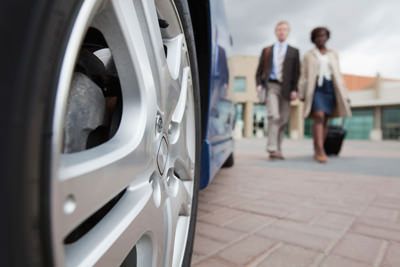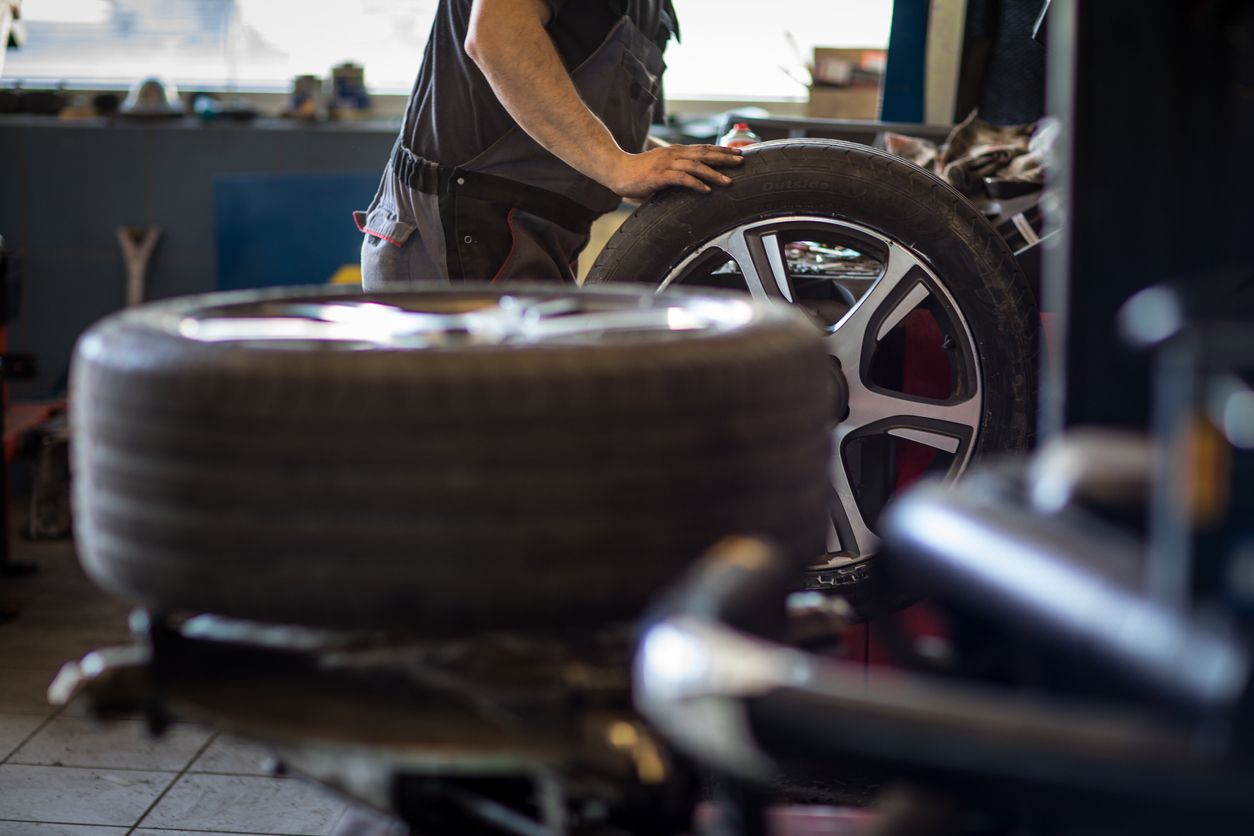We’ve come a long way from pulling on a horse's reins to steer our carriages from point A to point B. With modern steering systems, all it takes is a small turn of the steering wheel and we’re on our way around the corner and wherever we want to go! But did you know? There’s a lot more to your steering system than a steering wheel. Learn how the most common steering system works and how proper alignment can help ensure safe and smooth steering.
Your Steering System: The Basics
Give this exercise a try for a super simple illustration of the dynamics of a steering system: stand up and face forward. Now, turn your body so that it's facing the right.
Try it again, but this time pay attention to how your feet move. In all likelihood, your right foot moved a little bit, pivoting in place, and your left foot moved a lot (at least in comparison to your right). Your whole body changed direction, but your feet rotated different amounts. A similar thing happens with your steering system and wheels. When your car enters a right-hand turn, the two front wheels must both be placed at an angle, with the angle being much steeper for the inside (right) wheel.
The complexity of the steering system comes from how the system's two major components, the steering wheel and your vehicle’s front wheels, are linked. In other words, which parts make sure your wheels are positioned at the appropriate angles when you steer? In the majority of cars today, the answer is a rack-and-pinion steering system.
Rack-and-Pinion Steering
Most modern cars use a rack-and-pinion steering system. From top to bottom, here's a brief summary of how the system works:
- A shaft extends down from the steering wheel.
- This shaft has a round gear at the end called a pinion.
- The pinion sits on a notched rod (called a rack) that extends the width of your car, connecting to both your right and left wheel.
- When you turn the steering wheel, the pinion rolls through the notches on the rack and pushes the rod to the right or the left.
- When the rod moves, so do your wheels!
Long story short? The steering shaft uses a system of gears and notches to send messages from your steering wheel to your wheels.
Pro-Tip: Be cautious when driving a car that's unfamiliar to you. Not all steering systems are created equal. Different vehicles have different steering ratios, which is why a half turn of the wheel on one car may yield wildly different results than on another.
Steering & Alignment
Even when all of the inner workings of your steering system are operating to the best their ability, there’s still one more thing to keep in mind when it comes to steering your car in the right direction: wheel alignment. Safe steering and proper wheel alignment go hand in hand.
When your car was first manufactured, your wheels were pre-set at special angles to keep them running straight and driving smooth. In order for your vehicle to travel and respond to your steering the way it's supposed to, it needs precise alignment.
Unfortunately, your alignment can get thrown off when you bump into a curb, hit a pothole, or drive on rugged, unmaintained road. Improper alignment can shorten the lifespan of your tires and affect your ability to steer safely and accurately. If your car pulls to the right or the left, your steering wheel is crooked when you're driving straight, or your tires are squealing, it may be time for an alignment.
Is your car headed in the right direction?
Proper alignment helps ensure your vehicle will move in the direction you steer and in the way you expect. Steer clear of a potentially dangerous driving situation with a simple alignment at your local Firestone Complete Auto Care. Our technicians will inspect your vehicle's steering and suspension system during the process to ensure everything is in tip-top shape. Schedule a service appointment at your nearest Firestone Complete Auto Care online today. We'll get you pointed in the right direction!



